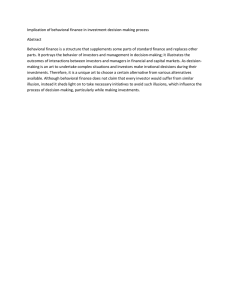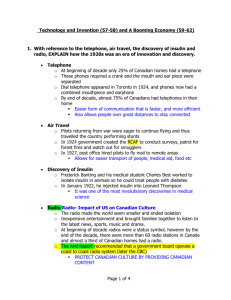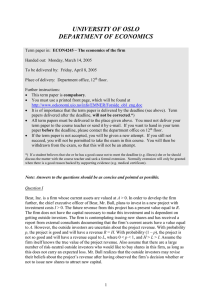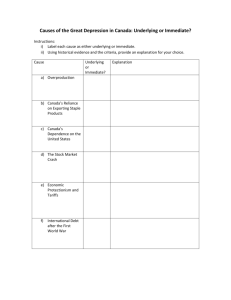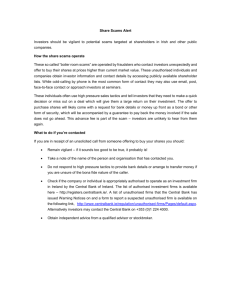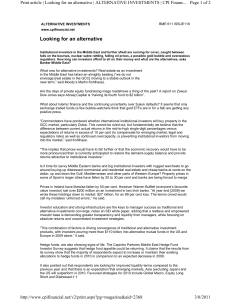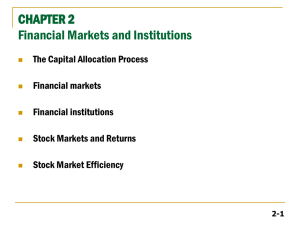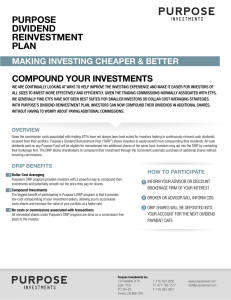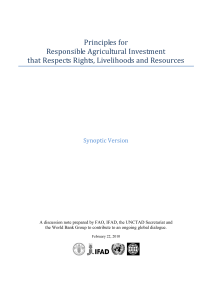A Booming Economy (59-62)
advertisement
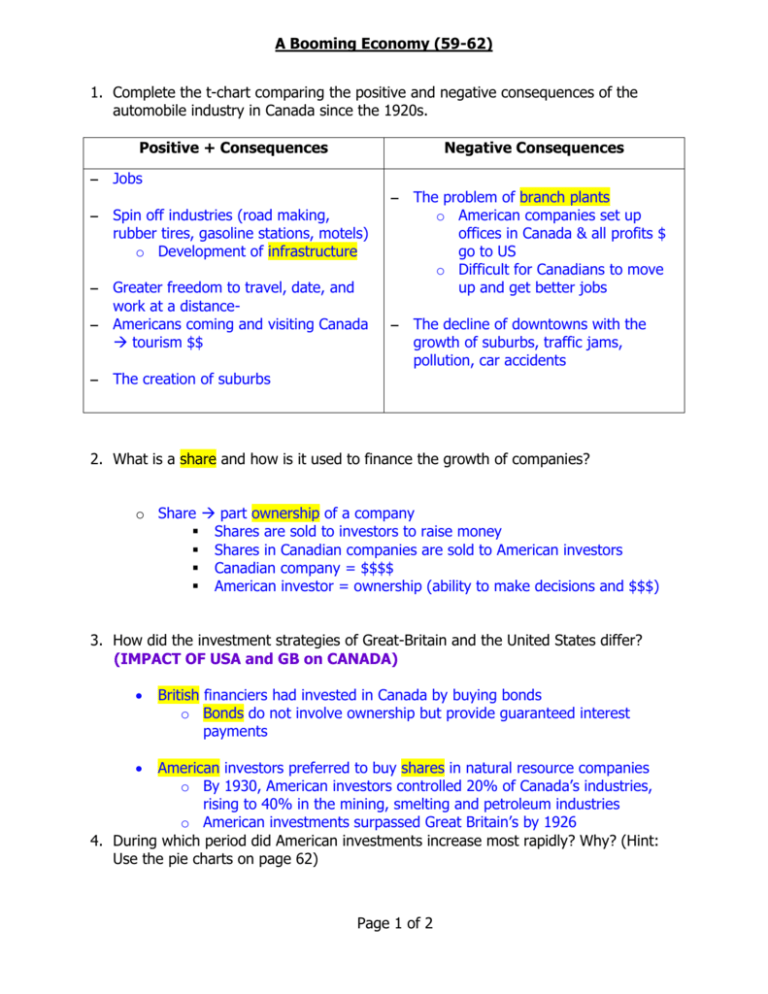
A Booming Economy (59-62) 1. Complete the t-chart comparing the positive and negative consequences of the automobile industry in Canada since the 1920s. Positive + Consequences Negative Consequences – Jobs – Spin off industries (road making, rubber tires, gasoline stations, motels) o Development of infrastructure – Greater freedom to travel, date, and work at a distanceAmericans coming and visiting Canada tourism $$ – – – The problem of branch plants o American companies set up offices in Canada & all profits $ go to US o Difficult for Canadians to move up and get better jobs – The decline of downtowns with the growth of suburbs, traffic jams, pollution, car accidents The creation of suburbs 2. What is a share and how is it used to finance the growth of companies? o Share part ownership of a company Shares are sold to investors to raise money Shares in Canadian companies are sold to American investors Canadian company = $$$$ American investor = ownership (ability to make decisions and $$$) 3. How did the investment strategies of Great-Britain and the United States differ? (IMPACT OF USA and GB on CANADA) British financiers had invested in Canada by buying bonds o Bonds do not involve ownership but provide guaranteed interest payments American investors preferred to buy shares in natural resource companies o By 1930, American investors controlled 20% of Canada’s industries, rising to 40% in the mining, smelting and petroleum industries o American investments surpassed Great Britain’s by 1926 4. During which period did American investments increase most rapidly? Why? (Hint: Use the pie charts on page 62) Page 1 of 2 Between 1914 and 1920 American investments increased by 21%. The most important reason for this growth was the First World War. Since Great Britain was strapped for money, Canada turned to the US for loans and financial help. Canadian minerals and other natural resources were in great demand during the war, and many American investors saw an opportunity to make money by owning these resources. 5. How did American companies avoid paying tariffs on goods? American companies established branch plants o A branch plant is a factory or business owned and controlled by a larger company that is based in a foreign country o Avoid National Policy- protectionist economy Although these firms were run by American managers and returned profits to the home office, the produced “made in Canada” goods and thus avoided paying tariffs 6. What was the result of the establishment of American Branch Plants? With the establishment of American branch plants, Canada lost control of its major industries resulting in a strong dependence on the US economy By the end of the decade, Americans owned: o 82% of Canada’s auto production o 68% of Canada’s electronics industry o 64% of Canada’s rubber industry o 42% of machinery o 41% of chemical production Economically, Canada was becoming tied to the United States and Canadians became concerned about foreign investment Page 2 of 2

